by Heather Kent | Jul 22, 2016
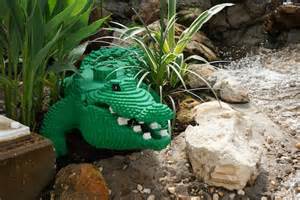 The 4th Annual 4-H Day at LEGOLAND on Saturday, September 10th. This event is an opportunity for 4-H members and their families to explore the LEGOLAND theme park at a deep discount, while raising funds for 4-H clubs, camps, and other educational programs. LEGOLAND is a great way to have fun with the entire family and learn about science, engineering, and technology. The Florida Department of Ag’s greenhouse is a must-see attraction. You can learn all about Florida agriculture and how we are feeding the nation and world. Just don’t eat the produce- it’s all made from LEGOs! You can also sign up for a robotics class while you are there to learn how engineers design, build, program, and test robots.
The 4th Annual 4-H Day at LEGOLAND on Saturday, September 10th. This event is an opportunity for 4-H members and their families to explore the LEGOLAND theme park at a deep discount, while raising funds for 4-H clubs, camps, and other educational programs. LEGOLAND is a great way to have fun with the entire family and learn about science, engineering, and technology. The Florida Department of Ag’s greenhouse is a must-see attraction. You can learn all about Florida agriculture and how we are feeding the nation and world. Just don’t eat the produce- it’s all made from LEGOs! You can also sign up for a robotics class while you are there to learn how engineers design, build, program, and test robots.
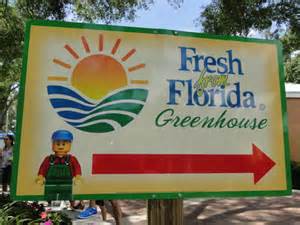
The Florida Department of Agriculture Greenhouse is a must-see attraction at LEGOLAND.
Frequently Asked Questions:
- Tickets are $35.00/person ($5.00 per ticket benefits the Florida 4-H Foundation). It is completely optional, but you can also purchase add-ons for express passes, parking, and admission to the water park.
- Any family that has participated in 4-H is eligible for the discount (this includes 4-H clubs, camps, day camps, school, afterschool, and military 4-H programs)
- Youth under the age of 2 are admitted for free
- Tickets are only good for Saturday, September 10th, 2016
- Tickets must be ordered online at least 24 hours before the event
- Use this secure link to order 4-H discount tickets
- You do not have to bring your 4-H Membership Card, just bring the tickets you print at home generated by the link above
- If you have a 4-H t-shirt, please wear it! We would like to see a “sea of green” at LEGOLAND that day.
- You are responsible for your transportation to and from the park, and for making any reservations for overnight accommodations. Many of the hotels in the area offer free shuttle services to and from the park, so ask your hotel concierge. The onsite LEGOLAND Hotel recently opened and is offering some great deals.
- If you are driving to the park, parking costs $17.00 onsite, but you can save $2.00 if you order your parking pass online when you purchase your tickets through our link above.
- For information about park attractions, show schedules, food, height restrictions, or accommodations for persons with disabilities visit http://florida.legoland.com/. Check out their online Family Guide. If you have toddlers, you may also want to read What to Do When you are Two.
- Please share photos of your LEGOLAND experience on social media using #4Heverywhere
by Heather Kent | Jul 15, 2016
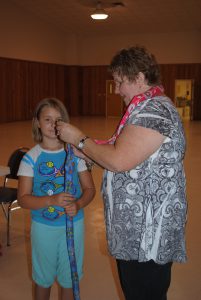
These DIY neck coolers are great to help youth learn about sewing AND science!
Even though it is not yet August, the Florida heat is sweltering. Staying hydrated is key, but you can also stay comfortable outdoors with a neck cooler. The neck cooler helps cool the blood pumping to your head and is a very effective way to prevent heatstroke when you need to be outdoors. This project is also a great beginner sewing project for 4-Hers and volunteers! This project is from the online Maker Movement Magazine. It is also a fun way to tie in the science of hydro-gels polymers. Hydro-gel polymers are long molecule chains that absorb water efficiently and easily. They are used in agriculture to prevent soil erosion, conserve water and even soak up toxic spills from our environment. A great extension of this project would be the Helpful Hydro-gel Experiment by Steve Spangler- the 2008 National 4-H Youth Science Day Experiment.
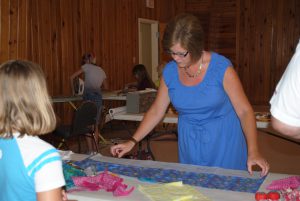
Youth are learning how to measure and cut fabric for their neck coolers with Monica Brinkley, County Extension Director and Agent in Liberty County
Here’s what you need to make your neck cooler:
- 1 piece of fabric measuring 36 inches long and 5 inches wide
- 1 tsp of hydro-gels (found in the gardening supply section of your local store)
- Thread
- Scissors
- Sewing needle (if sewing by hand) or sewing machine
- Iron and ironing board
Fold the piece of fabric lengthwise (right sides together) and press to form a tube. Stitch a 1/2 inch seam across one end and down the length of the fabric. Turn the tube right-side out and press. From the stitched end of the tube, measure 4 1/2 inches and stitch a seam across to make a pocket for the hydro-gels. On the open end of the tube, use a funnel to pour 1 tsp of dry hydro-gel beads inside the pocket. Next, fold the ends of the open tube inside and stitch securely. To activate the gels, simply soak in cool water. Tie around your neck and stay cool!
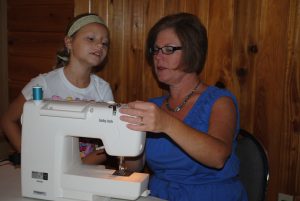
Neck coolers can be sewn by hand or with a sewing machine
Other helpful UF IFAS Extension resources:
Hydration Myths
Hydration in Hot Working Environments
Hydration Safety
4-H Sewing Project Info
by Heather Kent | Jul 8, 2016
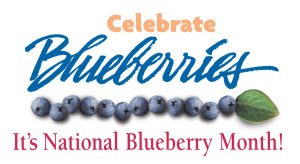 Did you know that July is National Blueberry Month? Blueberries are in season now, and reasonably priced at grocery stores, fruit stands, and farmers’ markets. Many growers also offer a “pick your own” service which can be a fun family outing. The good news is that this delicious treat has many health benefits. Blueberries are low in calories- only 80 calories per cup but are packed with nutrients. A handful of blueberries satisfy the recommended intake of dietary fiber. They are also high in vitamin C- one serving provides 25% of your daily requirement. Blueberries are also high in manganese, which helps the body process cholesterol and nutrients such as carbohydrates and protein.
Did you know that July is National Blueberry Month? Blueberries are in season now, and reasonably priced at grocery stores, fruit stands, and farmers’ markets. Many growers also offer a “pick your own” service which can be a fun family outing. The good news is that this delicious treat has many health benefits. Blueberries are low in calories- only 80 calories per cup but are packed with nutrients. A handful of blueberries satisfy the recommended intake of dietary fiber. They are also high in vitamin C- one serving provides 25% of your daily requirement. Blueberries are also high in manganese, which helps the body process cholesterol and nutrients such as carbohydrates and protein.
Blueberries are a native North American plant, and it was only within the last 100 years that we have been able to grow them commercially. All thanks to Elizabeth White, the daughter of a New Jersey farmer, teamed up with USDA botanist Frederick Coville to domesticate the blueberry. They spent years identifying blueberry plants with desirable qualities for cultivation. They harvested and sold the first cultivated crop of blueberries in 1916- exactly 100 years ago! Until 20 years ago, blueberries could only be grown in northern climates like New Jersey, Maine, and Michigan. Thanks to the University of Florida, southern blueberry cultivars were developed through research that don’t require as many chilling hours and bear more fruit. Although Florida is not currently the leading producer of blueberries, we are quickly catching up with 25 million pounds produced annually!
Fun Facts about Blueberries:
- Blueberries are relatives of the rhododendron family
- The perfect blueberry should have a “dusty’ appearance
- Don’t wash your blueberries until you are ready to eat them (washing speeds up the spoiling process).
- To freeze blueberries, place them unwashed, on a cookie sheet and flash freeze. Then place them in quart-size freezer bags to use later in smoothies, crumbles, cobblers, or ice cream.
- Recent studies show that blueberries may have the potential to aid in memory loss, vision loss and even slow down the aging process
- Native Americans recognized the nutritional value of blueberries and used them for medicinal purposes as well as flavorings
- Early American Colonists used blueberries to dye fabric and also to color paint
This month, celebrate the blueberry by planting a bush, visiting a U-pick farm, or making a tasty home-made blueberry treat. Fresh From Florida (a division of the Florida Department of Ag) has lots of free and delicious recipes. Try Florida Blueberry Parfait, Blueberry Breakfast Casserole, Blueberry and Blue Cheese Salad or even Blueberry Barbecue Sauce!
Additional UF/IFAS Resources about Blueberries:
by Heather Kent | Jul 2, 2016
It’s Fourth of July weekend and time to celebrate our independence with family and friends. This week, we wanted to share with you some tips and tricks to make your celebration fun, yummy and safe! We’ve compiled a list of previous posts that you might want to reference for this weekend:

Photo by Jill Wellington
by Heather Kent | Jun 24, 2016
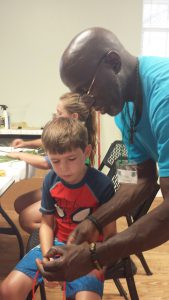
Nate Grimsley is known for teaching crafts at 4-H camp each year.
In a world where so many things don’t make sense, Nate Grimsley has discovered something that does. Ten years ago, Nate’s daughter won 1st place at the Leon County 4-H Tropicana Public Speaking Program and was awarded a full scholarship to Camp Cherry Lake. Nate had attended camp at Cherry Lake as a camper decades earlier and after being asked 9 years ago by 4-H agent Marcus Boston to consider attending camp as a volunteer he said “Yes!” and has never looked back. Today, Nate still serves as a chaperone for camp, but he also teaches art and crafts classes during the week. He has taught hundreds of youth how to make paracord bracelets and to weave fans and insect models out of native palmetto leaves. He is so good at his volunteer role that he is often asked to volunteer at other county camp weeks and even the State Shooting Sports Camp.
“Volunteering is rewarding- I love teaching and it is so fulfilling to give back and to set a positive example for kids. I had a learning disability when I was growing up, so I have a different perspective on how kids learn. I have one rule- they are never allowed to say ‘I can’t.’ They can say they don’t understand, but never ‘I can’t’. It is so rewarding to see them succeed.”
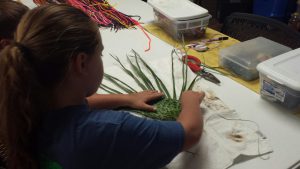
Nate teaches youth to use palmetto branches to weave fans, baskets and even 3-dimensional insect models.
Nate’s example has had a huge impact on his own children. Both of his children served as teen leaders for 4-H. His son’s cabin always won “cleanest cabin” and his daughter was such a good counselor that he was invited to intern at a camp in Maine. “The leadership skills that my kids learned at camp helped both of them land their first jobs. It is a great program and parents and teens should take advantage of it.” Marcus Boston and Stefanie Prevatt, 4-H faculty at the Leon County UF/IFAS Extension Office, have developed a strenuous but highly effective camp counselor leadership program. Even though it is a volunteer position, teens must complete an application, screening, interview and 30-hour training program in order to serve.
Even though Nate’s kids have graduated out of the 4-H program, he continues to serve. In addition to being a certified chaperone, he is also certified to teach archery through the 4-H Shooting Sports program. Erlier this year, he taught workshops for teens at adults at the Northwest Teen Retreat and 4-H State Volunteer Leader’s Forum.
“I am still involved because I just love kids and I love seeing them learn. I have always volunteered in different ways- school boosters, organized sports, but I love volunteering in 4-H so much that my wife and I are starting a 4-H club this fall- the ‘Good Sense 4-H Club.’ Our goal is to help kids learn how to problem solve and make good decisions now and later in life.”
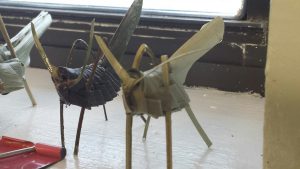
Nate’s palmetto-leaf grasshoppers are a popular camp craft and are extremely realistic looking.
Nate encourages everyone he knows to volunteer. He holds down a full-time job, but has always been able to work with his supervisor to make time for volunteering. “Being a volunteer is a great means of networking. I have met so many interesting people through my volunteer work. I find joy in giving back to others. God has given so much to me- I want to pay it forward. Also, we need solid role models to teach kids how to be independent. 4-H is a great way to do just that.”
4-H offers a wide range of volunteer positions to fit various schedules, interests and abilities. To find out more about volunteering and what is available in your community, contact your local UF IFAS County Extension Office or visit http://florida4h.org/volunteers.
 The 4th Annual 4-H Day at LEGOLAND on Saturday, September 10th. This event is an opportunity for 4-H members and their families to explore the LEGOLAND theme park at a deep discount, while raising funds for 4-H clubs, camps, and other educational programs. LEGOLAND is a great way to have fun with the entire family and learn about science, engineering, and technology. The Florida Department of Ag’s greenhouse is a must-see attraction. You can learn all about Florida agriculture and how we are feeding the nation and world. Just don’t eat the produce- it’s all made from LEGOs! You can also sign up for a robotics class while you are there to learn how engineers design, build, program, and test robots.
The 4th Annual 4-H Day at LEGOLAND on Saturday, September 10th. This event is an opportunity for 4-H members and their families to explore the LEGOLAND theme park at a deep discount, while raising funds for 4-H clubs, camps, and other educational programs. LEGOLAND is a great way to have fun with the entire family and learn about science, engineering, and technology. The Florida Department of Ag’s greenhouse is a must-see attraction. You can learn all about Florida agriculture and how we are feeding the nation and world. Just don’t eat the produce- it’s all made from LEGOs! You can also sign up for a robotics class while you are there to learn how engineers design, build, program, and test robots.








